Sewing Machines: what is right for you. I thought I would talk about my sewing machines today, what I love about them, what features I can’t live without, and where to start in purchasing or upgrading a sewing machine. I also have some sewing machine reviews from friends as well as some polls from Instagram so you get a more well rounded view of what sewing machines people use and love.
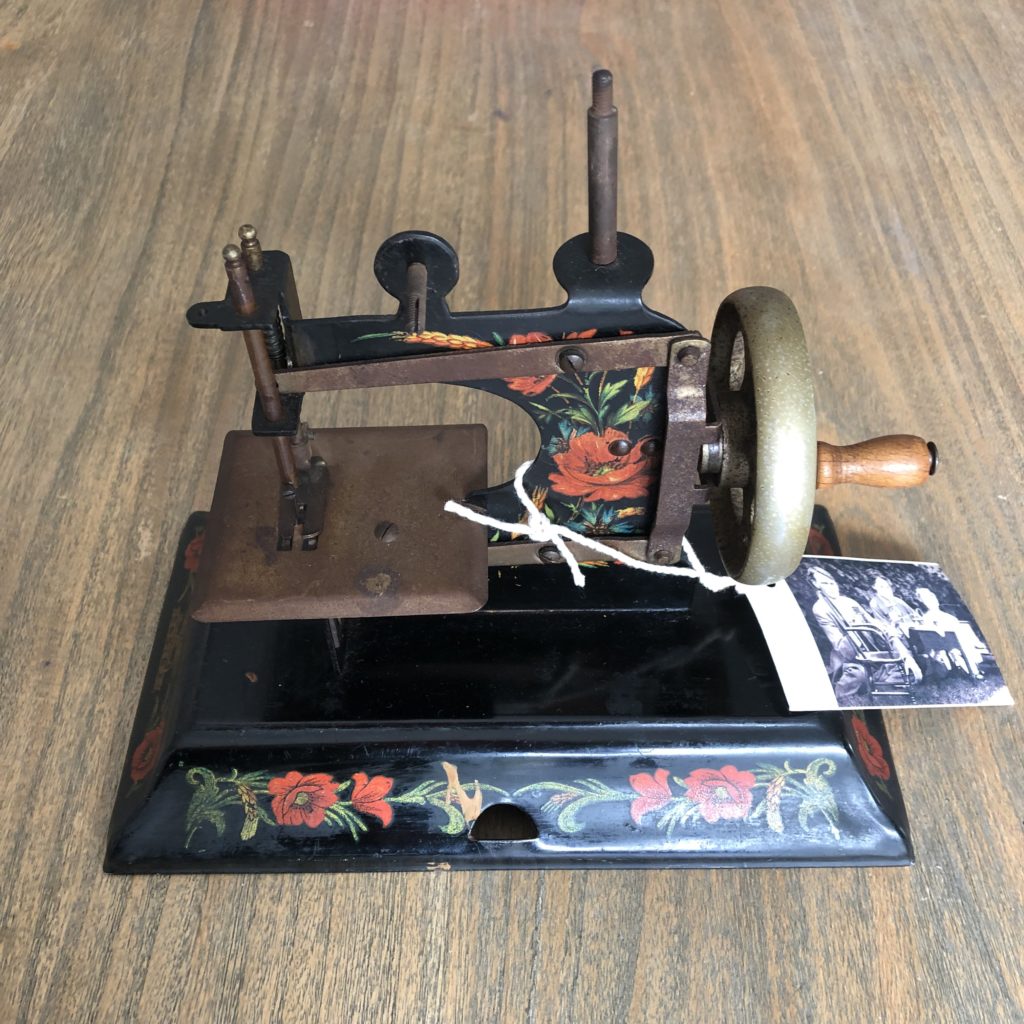
Figure out what you need in a Sewing Machine
First let’s talk about what you need in a sewing machine. Figure out what you will be sewing. Quilting cotton, fleece, faux leathers, vinyl, thicker projects? It is good to determine your main focus in sewing and also look to the future at things you might like to try. If you are mostly sewing straight seams while quilting you could probably use any machine. But should take into account if you want to sew bags or clothes in the future. In that case you may need something a little more heavy duty or that has the capability to sew through a bunch of seams at once. Look at reviews to see what people have sewn with, how many layers a machine can easily sew through, what needles they use, and personal experience is the most helpful in my opinion.
Questions you might ask yourself? Do you want an automatic thread cutter? What sort of presser feet do you need? How many different stitches do you want? Or do you want any fancier stitches? All things to chat with a sewing machine sales person about. But also great things to ask friends, or people you admire on Social media. Crowd sourcing is the best thing.
Here’s a very basic overview of parts of a sewing machine.
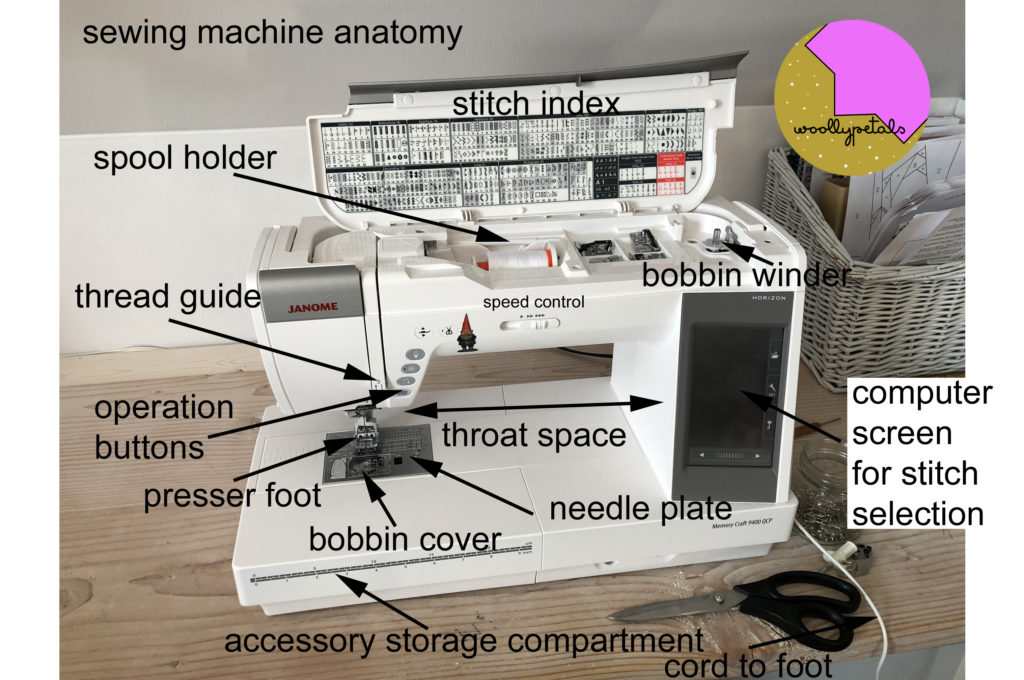
My Sewing Machine Progression
I started sewing when I was young. My mom sewed, and she taught me when I was under the age of 10. It was just part of our life. In Middle School and High School I sewed a lot on my moms old Pfaff sewing machine. At the time I was making doll clothes, stuffed animals out of faux fur, and home decor for my room. Then I went to college and didn’t sew for a few years, but ended up borrowing her machine for a little bit and got back into sewing home decor, mostly pillows.
When I graduated college and got married my parents bought me a Janome 4623 le plus sewing machine It was great. It had all the basic stitches, was computerized. But not a ton of bells and whistles. It sewed well and was hardy. At the time I sewed pillows from upholstery fabric, small crafts, and I actually learned to quilt on it too.
After my son was born and I was quilting more and more and my husband bought me a Janome Horizon 7700 and it was amazing! It upgraded me to bigger throat space, added on a bunch of fun stitches, added an automatic thread cutter, a dual feed walking foot (a janome thing), I felt fancy. I loved that machine. I really never had an issue with it.
Several years later I got a travel machine. My Janome Horizon was to big to travel on a plane with so I got a Janome 4120 qdc. It is great. Some things that were a must for me when I purchased it were an automatic thread cutter and a 1/4″ foot. Those two things are my most important sewing machine features and I can not compromise them. This Janome is light weight. Fits in a carry on suitcase and has a great stitches. I have made many a quilt on retreats with it.
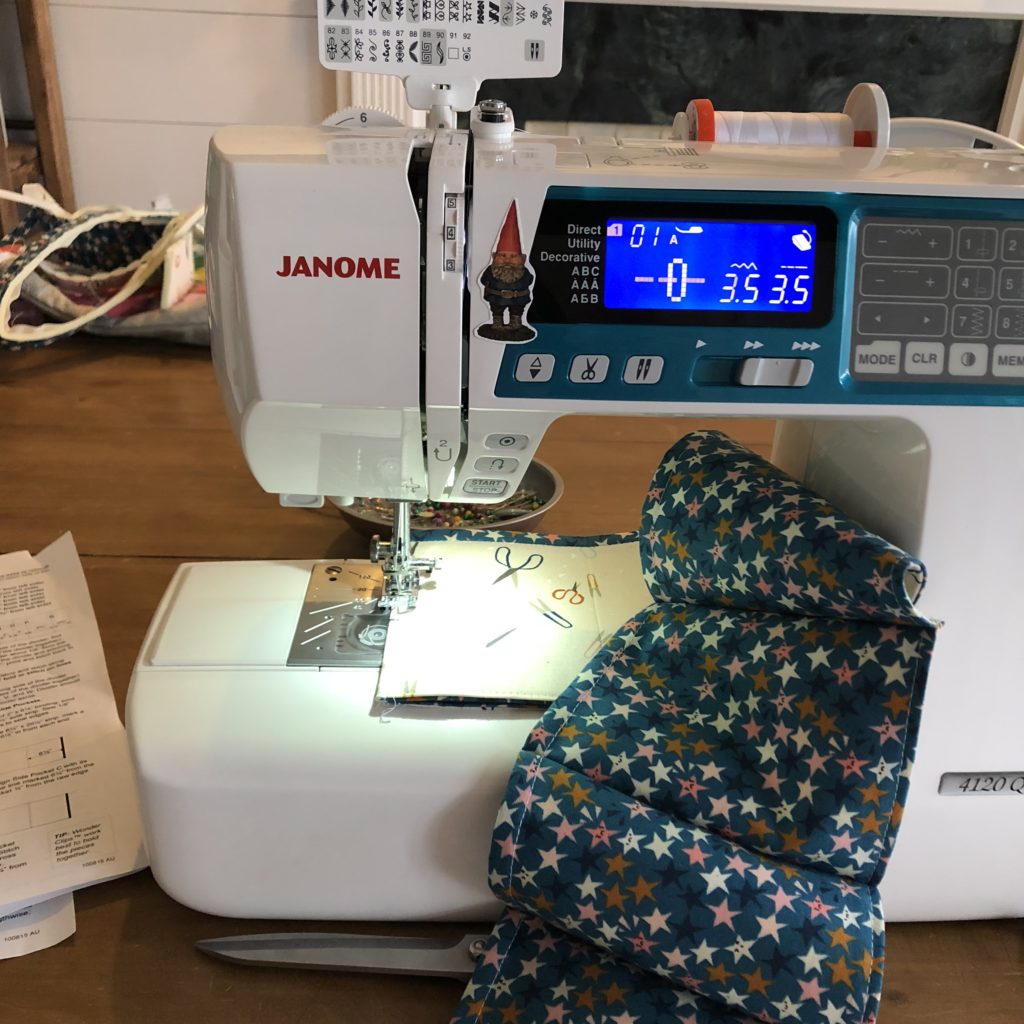
A few years ago I traded my Janome Horizon Memory Craft 7700 in for a larger model, A Janome Memory Craft 9400 qcp. Mainly I upgraded fore more throat space as I was quilting a lot of quilts at the time. Let’s just say it’s not my favorite. It took me a long time to figure out that I had to use Janome brand needles for it, I had never had to do that before. Maybe because it has more bells and whistles it is more finicky about everything. When I used it regularly I had it serviced every year. But I don’t use it much anymore due to my next and current machine.
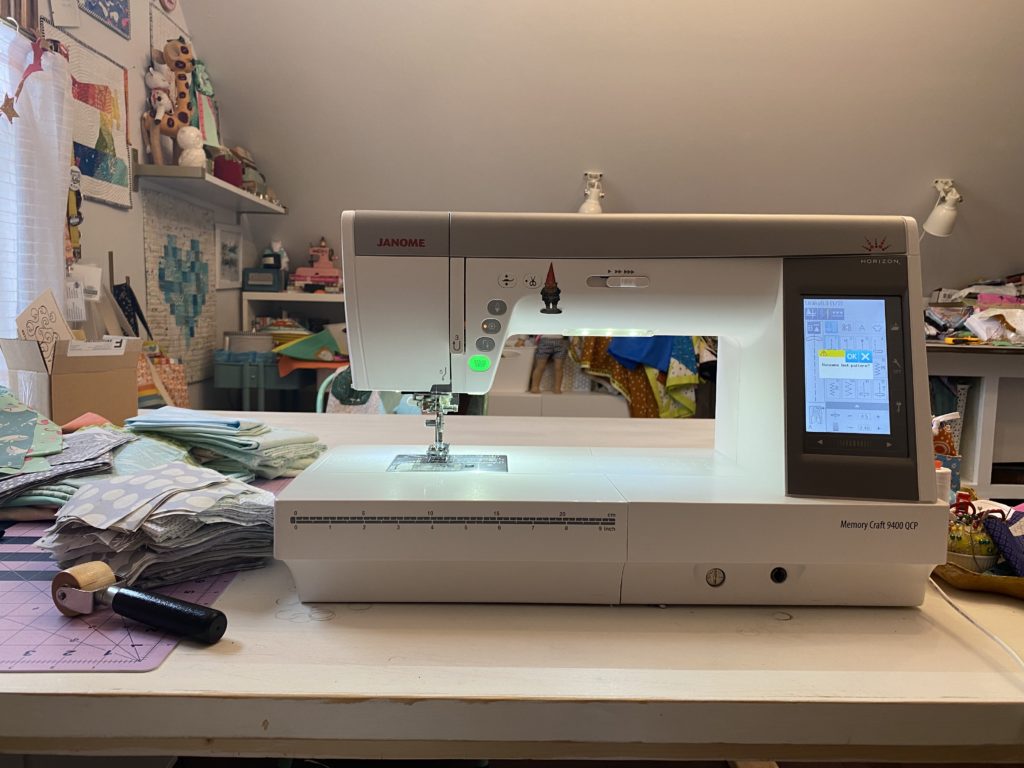
I got a Juki TL 2010q about a year and a half ago and I love it. Now I would not recommend this for a one and only machine purely because it just does a straight stitch. It has a thread cutter, a walking foot, a back stitch of course, but it only goes straight. If you purely straight stitch 100% of the time then it will work. But if you ever want to go beyond straight stitching you can’t with this machine. I also don’t love the 1/4″ foot on it and the regular foot is not a 1/4″ foot either. It is just slightly off. So I have to keep that in mind when sewing quilts. I do love how fast it is. So much faster than any other machine I have owned. It is my daily piecing machine now.
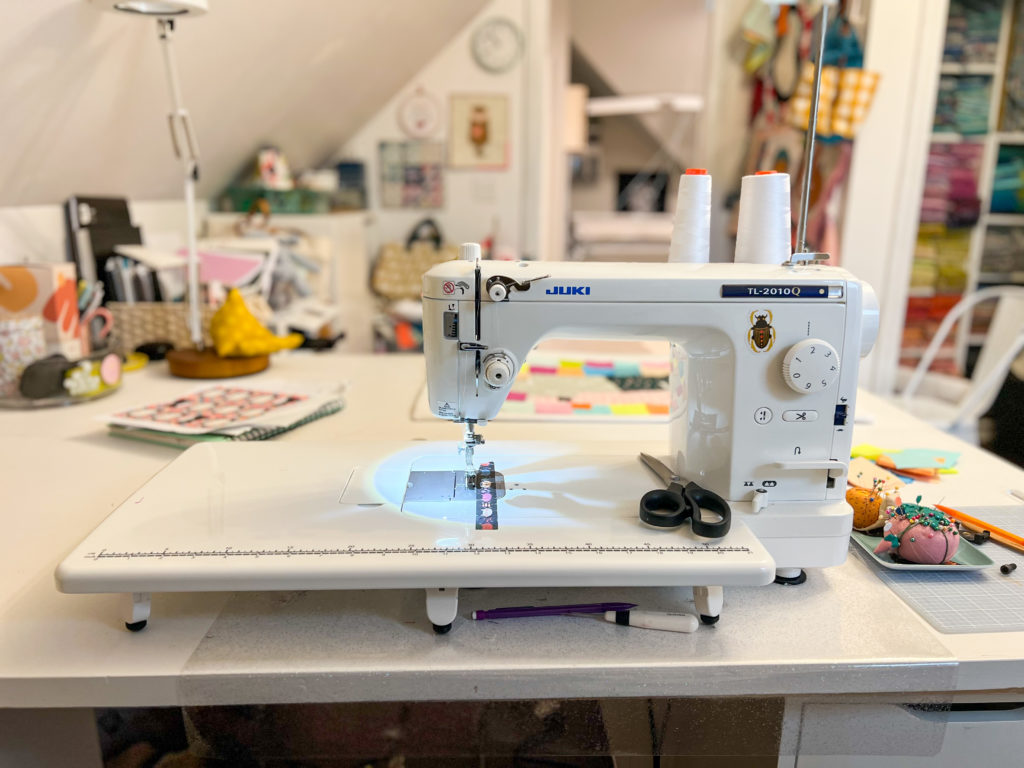
Okay lastly, along the way I acquired a Janome Serger which is great. It very basic and just helps me out with clothing and inside pillows or things I sell so they hold up better.
I was also gifted a nice singer that I have since passed along to someone else.
A few years ago I also acquired a Grace Company 15r Qnique long arm machine with frame that has negated my need to quilt on my domestic machine and I no longer NEED a large throat space.
My personal requirements in a sewing machine
Decent size throat space: The space between the presser foot and the right side. A larger throat space helps with ease of sewing larger items or when you have to assemble a whole quilt top.
Automatic thread cutter: An automatic thread cutter is a button or a click of the foot after a seam that cuts the thread for you before you lift the presser foot. I like it because it typically saves time as well as thread. If you don’t have an automatic thread cutter you would finish your seam, lift your presser foot, pull your fabric out with the threads still attached, and then grab scissors and cut those thread with tails hanging out of the machine.
Different presser feet: I think a machine needs several presser feet. A standard foot equal on both sides. A 1/4″ presser foot is amazing for quilting. This usually has a guide on the side, or the edge is 1/4″ away from the needle, zipper foot, blind hem foot, button foot. There are quite a few that are pretty typical to get with a machine.
Walking foot: A optional foot that helps feed your fabric through evenly.The perfect foot to use for thicker projects and straight line quilting. My personal favorite for zippers.
Different stitches: Having a range of stitches is very nice. Basic machines tend to have straight, zigzag, knit stitch, blind hem, button holes, Some of these having multiple options. A lot of machine will have a handful of decorative stitches as well and of course the fancier the machine the more fancy the stitches can get.
Intuitive to use: This might be a tough one. There is a little learning curve if you’ve never used a machine. But I have sewn on machines that I needed to look at the way to thread it every time and I have sewn on machine that I just get the feel of how it works and where to thread.
There are just so many things that we could talk about with sewing machines. I encourage you to reach out if you have any questions and seek out a local quilt shop or sewing machine sales location near you to really dive in.
Reviews
These are all reviews by friends.
Kate @shecansew on Instragram wrote this about her machines.
Bernina 350 SE (Tula Pink): This was purchased as my first upgrade from a Kenmore machine on which I learned to sew. It has great stitch quality and a large library of decorative stitches, but I didn’t use those very often. I like the quick-change feet on Berninas and the 37 foot in particular–it has a 1/4″ seam guide that is remarkably accurate. I have since upgraded but still love this machine.
Bernina 480 SE: I wanted something with a little more throat space and an automatic thread cutter, and this model is a step or so up from the 350. I can use the feet I already had for this machine, which is great, and it has a jumbo bobbin, which supposedly holds 80% more thread than a standard bobbin. I just like that I don’t have to wind a bobbin very often. I use this mostly for piecing when I need an accurate 1/4″ seam and for sewing garments because it has a free arm. I wish the extension table was a little bigger.
Juki TL-2010Q: I bought this machine used, but it was very close to new. I needed more of a work horse for handling thick items like bags and also wanted even more throat space to do some quilting on a home machine. This fits the bill. Straight-stitch only, but it does it well, a larger extension table, automatic thread cutter, and the option to sew FAST. I have a walking foot for this machine, but I don’t use it, instead opting to adjust the presser foot pressure. The only thing that keeps me from using this machine exclusively for quilting is the inaccurate 1/4″ seam.
Stephanie @patchanddot on Instagram wrote this about her machine.
“My sewing machine is the Bernina 350 PE (Patchwork Edition). It’s the
first new machine I ever had, and after almost eight years of sewing
with it, I feel like it’s the only one I’ll ever need. As a quilter, I’m
constantly using the “37” foot, which is perfectly sized for those
quarter-inch seams. I also opted to get the walking foot add-on, and I
use it to quilt anything baby-sized or smaller. Tip: If you play around
with Bernina’s stitch #4 – the running stitch – extending the length to
at least three, and the width about 9 mm, it creates a nice wavy line
that’s perfect for quilt tops.
Katie @loveofewe on Instagram wrote this about her machine
I love my Bernina 770QE (Quilter’s Edition). This is my second Bernina I’ve owned. The first I bought around 2004 and is one of their smaller Activa series. I still have it as a back up machine. Once I started completing full size quilts and top quilting them myself it quickly became obvious I needed a machine with a larger throat (is that what it’s called?!). The 770QE has been great for this! You can easily fit full size quilts to top quilt in the large throat area – 10 inches of space to the right of the needle. It comes with a dual-feed foot that works similar to a walking foot and can be used for top quilting. I also have a walking foot that I use for patterns that have a lot of seam bulk. This machine is very high tech, everything is operated by buttons and the main screen. The feet are recognized by the machine and it will tell you if you need a special needle plate or anything else you may need to change to accommodate that foot. I love that it lets you know when your bobbin thread is low, and that the bobbin is large and holds more thread than most other bobbins. When I first got the machine and wasn’t sure of what I was doing it was super helpful that it had everything from the manual a finger click away on the main screen. I’ve had this machine for about 7 months and I’m still learning new things everytime I use it.
Robin @robineggbluegirl on Instagram said this about her machine.
“I use a Babyock Melody. I’ve had it for 10 years. it is my main machine and my travel machine. Love it!”
I also asked on Instgram stories what people had, if they like it, and how long. Here are some answers I got.
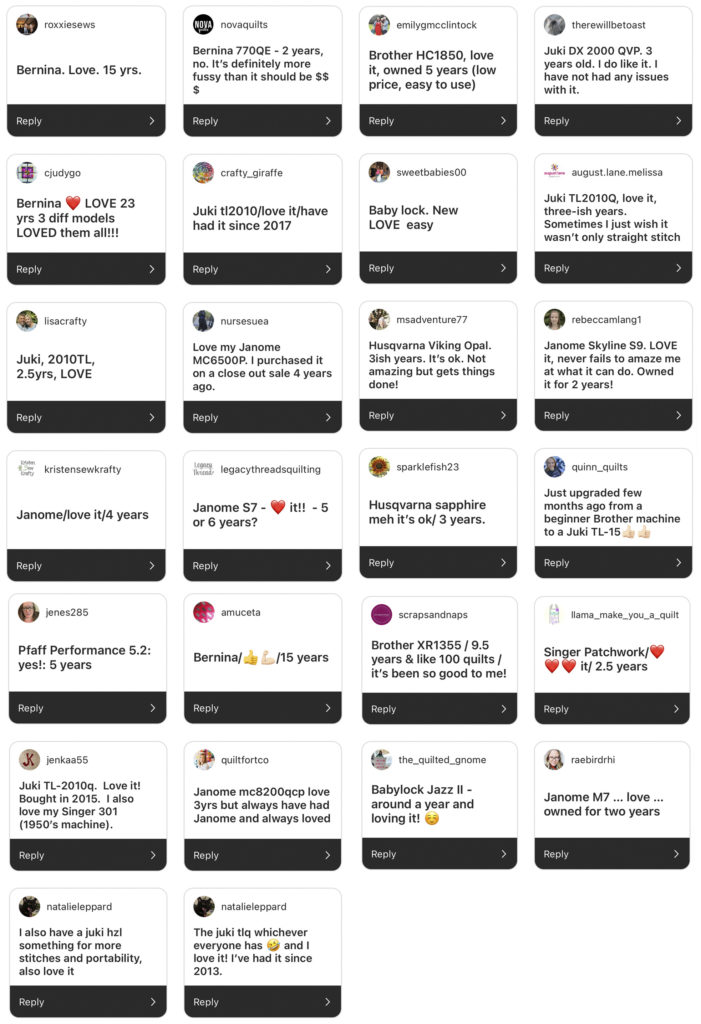
In conclusion
Sewing Machines: what is right for you. I hope this post has taken you a step closer to finding out what is best for you. There is a lot of info out there and a lot of different machines and price points. So check out those recommended sewing machines and start finding the right machine for you.
None of the links in this post are affiliated. I just link so you can easily see and find them. All opinions in this post are mine and not sponsored. I have purchased all my machines myself. The gifted one was from a family friend not a company of any sort.
Thanks for stopping by! Let me know if you purchase a machine on any of my or my friends recommendations.

It’s great that you’ve shared your sewing machine journey and insights on what to look for in a machine. The variety of features and options can certainly be overwhelming when choosing. I appreciate you breaking down the important criteria like throat space, presser feet versatility, and stitch capabilities. And getting real-world reviews from other sewers on their favorites is so helpful for getting a sense of what works best for different projects. Thanks for taking the time to provide such a well-rounded perspective based on your own experience.